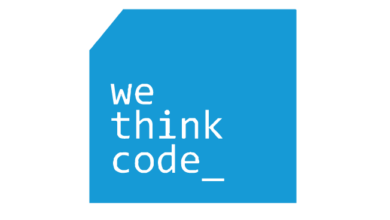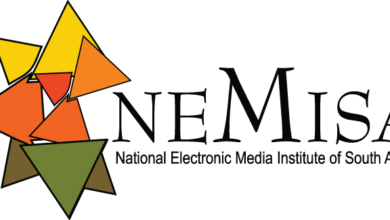The Best Chat AI: OpenAI’s ChatGPT vs Meta AI vs Bing Chat Pilot

As artificial intelligence continues to advance, the landscape of conversational AI has become increasingly competitive. Among the leading players in this field are OpenAI’s ChatGPT, Meta AI’s chatbot, and Bing Chat Pilot. Each of these platforms offers unique features and capabilities, making it essential to understand their strengths and weaknesses to determine which is the best fit for different use cases. This article provides a comprehensive comparison of these three leading chat AIs, focusing on their features, performance, user experience, and overall value and all currently available for free to South Africans.
OpenAI’s ChatGPT
Overview:
OpenAI’s ChatGPT has garnered significant attention for its sophisticated natural language processing capabilities. It is based on the GPT-4 architecture, which represents one of the most advanced models in the GPT series. ChatGPT is designed to engage in human-like conversations, understand context, and generate coherent responses across a wide range of topics.
Key Features:
- Contextual Understanding: ChatGPT excels in maintaining context over extended conversations. It can remember prior interactions within a session, making it effective for complex queries and multi-turn dialogues.
- Versatility: It supports a variety of tasks, including answering questions, generating content, and providing detailed explanations on diverse topics.
- Adaptability: ChatGPT can be fine-tuned for specific applications, such as customer service or content creation, allowing for customization based on user needs.
Performance:
ChatGPT is known for its high accuracy and fluency in generating responses. It benefits from continuous updates and improvements by OpenAI, which ensures that it remains at the forefront of conversational AI technology. However, it can occasionally produce responses that are overly verbose or off-topic, particularly in ambiguous situations.
User Experience:
The user experience with ChatGPT is generally positive, thanks to its intuitive interface and responsive nature. It is widely used in various applications, from personal assistants to professional tools, and is accessible through multiple platforms, including web and mobile applications.
Meta AI
Overview:
Meta AI, formerly known as Facebook AI, has developed its own suite of conversational AI tools. While Meta AI’s chatbot is not as widely recognized as ChatGPT, it leverages Meta’s extensive research in AI and machine learning to deliver robust performance.
Key Features:
- Integration with Social Media: Meta AI’s chatbot is seamlessly integrated with Facebook Messenger and other Meta platforms, making it highly accessible for users within the social media ecosystem.
- Contextual Relevance: Meta AI focuses on delivering responses that are contextually relevant to social interactions, leveraging data from user profiles and engagement history.
- Real-Time Adaptation: The chatbot can adapt to ongoing conversations in real-time, improving the relevance of its responses based on the latest inputs.
Performance:
Meta AI’s chatbot is effective in handling social and casual interactions, providing relevant and timely responses. However, it may not match the versatility and depth of ChatGPT in more complex or technical discussions. Meta AI’s approach is more focused on enhancing social media engagement rather than broad-based conversational capabilities.
User Experience:
The integration with Meta’s platforms offers a seamless user experience, especially for users already engaged with Facebook and Instagram. The chatbot is designed to facilitate interactions within these environments, but its capabilities outside of social media contexts might be limited compared to other chatbots.
Bing Chat Pilot
Overview:
Bing Chat Pilot, developed by Microsoft, is integrated with Bing’s search engine and Microsoft’s suite of productivity tools. It leverages Microsoft’s advancements in AI and search technology to deliver a unique conversational experience.
Key Features:
- Search Integration: Bing Chat Pilot benefits from real-time search capabilities, allowing it to provide up-to-date information and answer questions with current data.
- Productivity Focus: The chatbot is designed to assist with productivity tasks, such as scheduling, reminders, and information retrieval, integrating with Microsoft Office applications.
- Contextual Awareness: Bing Chat Pilot uses Bing’s search algorithms to understand and respond to queries with a high degree of contextual relevance.
Performance:
Bing Chat Pilot excels in scenarios where up-to-date information and productivity tools are required. It offers accurate and current responses thanks to its search engine integration. However, it may not offer the same depth of conversational engagement as ChatGPT, particularly in non-technical or less data-centric interactions.
User Experience:
The user experience with Bing Chat Pilot is enhanced by its integration with Microsoft’s ecosystem, making it a valuable tool for users within that environment. Its performance in casual or complex conversations might be more limited compared to ChatGPT, but it shines in contexts where real-time data and productivity features are paramount.
Conclusion
Determining the best chat AI among OpenAI’s ChatGPT, Meta AI, and Bing Chat Pilot depends on the specific needs and use cases of the user.
- ChatGPT stands out for its versatility, depth of understanding, and broad applicability in various conversational scenarios. It is ideal for users seeking advanced conversational capabilities and customization options.
- Meta AI is best suited for those heavily invested in social media, offering seamless integration with Facebook’s platforms and real-time contextual adaptation.
- Bing Chat Pilot excels in contexts requiring up-to-date information and productivity features, particularly for users within Microsoft’s ecosystem.
Each of these chat AIs has its strengths, and the choice ultimately depends on whether the priority is advanced conversational depth, social media integration, or productivity and real-time data retrieval.




